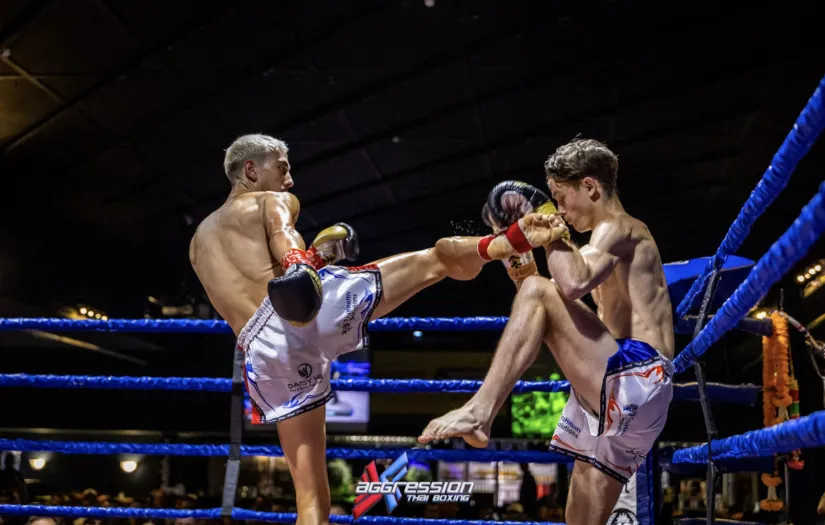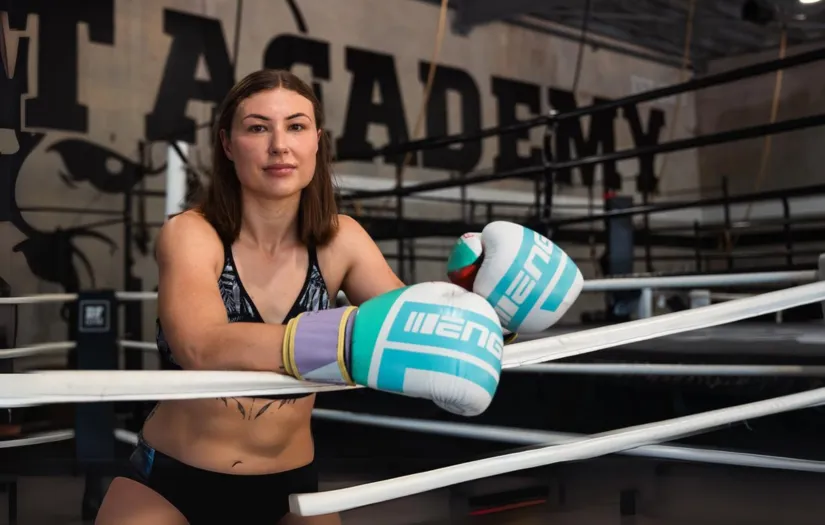
Expert Guide to MMA Muscle Recovery Techniques
Expert Guide to MMA Muscle Recovery Techniques
MMA athletes often struggle with muscle soreness and fatigue, hindering their performance and training consistency. This expert guide to MMA muscle recovery techniques offers practical solutions to optimize healing and boost longevity in the sport. We'll explore effective post-training stretches, nutrition strategies, and active recovery workouts that target key areas like the knee. Drawing from exercise physiology principles, we'll also discuss the importance of proper hydration and disciplined sleep habits. By implementing these evidence-based techniques, fighters can accelerate recovery, reduce injury risk, and maintain peak performance throughout their careers.
Recognize Why Muscle Recovery Is Vital for MMA Athletes

Muscle recovery is crucial for MMA athletes to enhance performance and prevent injuries. Understanding the impact of overtraining on muscle health is essential. Proper recovery techniques, including gymnastics-inspired exercises, meditation at strength-camp, and the use of tools like foam rollers and Epsom salt baths, can help fighters avoid burnout and reduce the risk of knockout losses. Book a Call
Learn How Recovery Enhances Performance and Prevents Injury
Effective recovery practices play a crucial role in enhancing performance and preventing injuries for MMA athletes. By allowing muscles to repair and strengthen between training sessions at strength-camp, fighters can avoid overtraining and maintain peak physical condition. This recovery process helps athletes build speed, power, and endurance, essential components for success in the gym and during competitions.
Proper recovery techniques also aid in reducing the accumulation of toxins in the body, which can hinder performance and increase injury risk. Hydration with sports drinks and adequate rest periods between intense strength-camp workouts are key factors in preventing fatigue and maintaining optimal muscle function. By prioritizing recovery, MMA athletes can sustain their training intensity and minimize the likelihood of burnout or overuse injuries that could derail their progress.
Understand the Impact of Overtraining on Muscle Health
Overtraining can severely impact strength-camp health in MMA athletes, leading to decreased performance and increased injury risk. Excessive training without proper recovery can elevate blood pressure, reduce endurance, and cause persistent fatigue in major muscle groups like the triceps. This physiological stress can hinder an athlete's ability to perform Olympic weightlifting exercises effectively, compromising strength and power development.
MMA fighters who overtrain often experience delayed muscle recovery and prolonged soreness, limiting their ability to maintain consistent training intensity. Without adequate rest and relief, athletes may face a higher likelihood of strains, sprains, and other soft tissue injuries. Implementing sports-strength-and-conditioning recovery periods and balancing high-intensity workouts with active recovery sessions can help mitigate these risks and maintain optimal muscle health for peak performance.
Implement Effective Post-Training Stretching Techniques

Effective post-training stretching techniques are crucial for MMA athletes' muscle recovery and performance. Dynamic stretches help reduce muscle soreness by increasing blood flow and flexibility. Static stretching improves overall flexibility, enhancing the human body's range of motion. These techniques, combined with proper hydration and electrolyte balance, optimize physical fitness and prevent heat-related issues during intense training sessions involving kettlebells and other equipment.
Practice Dynamic Stretches to Reduce Muscle Soreness
Dynamic stretches play a crucial role in reducing muscle soreness for MMA athletes, particularly after intense wrestling sessions. These active movements improve blood flow and flexibility, helping to flush out lactic acid buildup and prepare the body for optimal recovery. Incorporating dynamic stretches that target major muscle groups used in MMA, such as leg swings and arm circles, can significantly enhance the recovery process and support the immune system's response to physical stress.
To maximize the benefits of dynamic stretching, fighters should focus on movements that mimic their sport-specific actions. This approach not only aids in muscle recovery but also helps maintain proper form and technique. Integrating dynamic stretches with a balanced post-workout meal that includes whole grains and fatty acids can further support muscle repair and reduce inflammation, setting the stage for improved performance in subsequent training sessions.
Incorporate Static Stretching for Improved Flexibility
Static stretching plays a crucial role in improving flexibility for MMA athletes, enhancing their range of motion and reducing the risk of injuries during intense training sessions. By incorporating static stretches that target key muscle groups, such as the biceps and quadriceps, fighters can increase their overall mobility and performance. This technique is particularly effective when performed after weight training or sprint workouts, allowing muscles to lengthen and recover more efficiently.
To maximize the benefits of static stretching, MMA athletes should hold each stretch for 15-30 seconds, focusing on breathing deeply and relaxing into the stretch. It's essential to wear appropriate clothing that allows for a full range of motion during these exercises. Additionally, consuming a protein supplement post-workout can support muscle recovery and growth when combined with an effective stretching routine, helping fighters maintain their strength and flexibility for optimal performance in the octagon.
Optimize Nutrition for Accelerated Muscle Recovery

Optimizing nutrition is crucial for accelerated muscle recovery in MMA athletes. A strength and conditioning coach emphasizes the importance of protein-rich foods to rebuild muscle tissue after intense training sessions. Additionally, incorporating anti-inflammatory foods in the diet plan helps combat chronic pain and supports the nervous system. This approach complements other recovery techniques like cycling, enhancing overall performance in combat sports.
Consume Protein-Rich Foods to Rebuild Muscle Tissue
Consuming protein-rich foods is essential for MMA athletes to rebuild muscle tissue after intense training sessions. Fighters engaging in rigorous Muay Thai workouts or performing complex movements like the clean and jerk require adequate protein intake to support muscle repair and growth. Nutrient-dense sources such as lean meats, fish, and plant-based proteins provide the necessary amino acids for optimal recovery.
Professional fighters should aim to incorporate high-quality protein sources into their meals within 30 minutes after training to maximize muscle recovery. This practice, combined with proper hydration and balanced nutrition, supports weight loss goals while maintaining lean muscle mass. Consulting with a sports nutritionist or a physician specializing in combat sports medicine can help athletes develop personalized meal plans that meet their specific recovery needs.
Include Anti-Inflammatory Foods in Your Diet Plan
Including anti-inflammatory foods in an MMA fighter's diet plan is crucial for reducing muscle soreness and promoting faster recovery. Foods rich in omega-3 fatty acids, such as salmon and walnuts, help decrease inflammation in the abdomen and other areas of the body subjected to intense training. Incorporating these foods alongside regular massage therapy can significantly enhance recovery, especially after grueling boxing sessions.
Fighters should also consider adding colorful fruits and vegetables to their meals, as these contain powerful antioxidants that combat inflammation. Berries, leafy greens, and citrus fruits are excellent choices for supporting overall health and recovery. When combined with exercises using medicine balls and focusing on arm strength, this anti-inflammatory diet approach can lead to improved performance and reduced risk of injury during training and competitions.
Utilize Massage and Foam Rolling for Muscle Relief

Massage and foam rolling are essential techniques for MMA athletes seeking muscle relief and improved biomechanics. Self-myofascial release with foam rollers targets specific muscle groups, enhancing joint mobility and reducing tension. Professional massage therapy offers deep relief, addressing complex muscle issues and boosting confidence. These methods promote fluid movement and maintain healthy skin, crucial for optimal performance in combat sports.
Apply Self-Myofascial Release With Foam Rollers
Self-myofascial release with foam rollers is an essential recovery technique for MMA athletes, particularly after intense bench press or push press sessions. Research has shown that this method effectively reduces muscle tension and improves flexibility, which is crucial for fighters engaging in grappling-based disciplines like jujutsu.
MMA athletes can incorporate foam rolling into their recovery routine after swimming or other cross-training activities to target specific muscle groups. By applying controlled pressure to tight areas, fighters can enhance blood flow and promote faster recovery, ultimately improving their performance in both striking and grappling aspects of mixed martial arts.
Seek Professional Massage Therapy for Deep Relief
Professional massage therapy offers MMA athletes deep relief and targeted treatment for muscle tension and stress. This specialized approach addresses the unique demands of combat sports, helping fighters recover from intense calisthenics and strength training sessions. By focusing on specific muscle groups and problem areas, massage therapists can alleviate pain, improve circulation, and enhance overall performance.
Regular massage sessions contribute significantly to an athlete's long-term health and disease prevention goals. MMA fighters who incorporate professional massage into their recovery routine often experience reduced muscle soreness, improved flexibility, and faster healing times between bouts. This proactive approach to muscle care allows athletes to maintain a consistent training schedule and optimize their performance in the octagon.
Adopt Proper Sleep Habits to Boost Muscle Regeneration

Proper sleep habits are crucial for MMA athletes' muscle regeneration and overall performance. Health professionals emphasize the importance of consistent sleep schedules and sleep-friendly environments to optimize recovery during training camps. Quality sleep aids in blood circulation, muscle repair, and healing of scars. It also supports quadriceps and other muscle groups' recovery, essential for peak athletic performance.
Establish a Consistent Sleep Schedule for Recovery
Establishing a consistent sleep schedule is crucial for MMA athletes to optimize muscle recovery and combat fatigue. By maintaining regular sleep and wake times, fighters support their rotator cuff and other muscle groups' repair processes, essential for exercises like elbow strikes. This routine helps regulate the body's internal clock, enhancing the quality of rest and promoting more efficient fat metabolism during sleep.
MMA professionals should aim for 7-9 hours of uninterrupted sleep per night, adjusting their schedule to accommodate early morning training sessions. Consistency in sleep patterns supports the body's natural recovery rhythms, improving overall performance and reducing the risk of overuse injuries. By prioritizing sleep as part of their training regimen, fighters can enhance their ability to execute complex techniques and maintain peak physical condition throughout their careers.
Create a Sleep-Friendly Environment for Better Rest
Creating a sleep-friendly environment is crucial for MMA athletes to enhance muscle recovery, particularly for the hamstring and leg muscles. A dark, quiet room with a comfortable temperature promotes deeper sleep, allowing the body to repair tissue and improve cardiovascular fitness. Athletes should invest in blackout curtains and use white noise machines to block out disruptive sounds, ensuring uninterrupted rest for optimal heart health.
MMA fighters can further optimize their sleep environment by using supportive mattresses and pillows that align the spine and reduce pressure on muscles. This is especially important for athletes who use heavy pads during training, as proper sleep posture helps alleviate muscle tension and supports recovery. Removing electronic devices from the bedroom and establishing a relaxing pre-sleep routine can also contribute to better sleep quality, enhancing overall performance and muscle regeneration.
Engage in Active Recovery Workouts to Promote Healing

Active recovery workouts are essential for MMA athletes to promote healing and reduce delayed onset muscle soreness. Low-intensity exercises increase blood flow, aiding in recovery, while yoga or Pilates offer gentle muscle stretching. These techniques complement other recovery methods like sauna use, which can stimulate growth hormone production, and cryotherapy, which helps manage lactic acid buildup.
Perform Low-Intensity Exercises to Increase Blood Flow
Low-intensity exercises provide an effective stimulus for increasing blood flow and promoting muscle recovery in MMA athletes. These activities, such as light jogging or cycling, help maintain a consistent body temperature while facilitating the removal of metabolic waste products from muscles. For fighters recovering from tendinopathy or other overuse injuries, low-intensity exercises offer a safe way to maintain cardiovascular fitness without exacerbating existing conditions.
Incorporating low-intensity workouts into recovery routines can give MMA athletes a competitive advantage, particularly those transitioning from collegiate wrestling backgrounds. By engaging in activities that promote circulation without overtaxing the muscles, fighters can accelerate healing processes and maintain their conditioning levels. This approach allows athletes to stay active between intense training sessions, supporting overall performance and reducing the risk of detraining during recovery periods.
Incorporate Yoga or Pilates for Gentle Muscle Stretching
Incorporating yoga or Pilates into an MMA athlete's recovery routine offers gentle muscle stretching that complements high-intensity training. These practices help alleviate the strain on muscles often used in exercises like the snatch, promoting flexibility and reducing the risk of injury. By focusing on controlled movements and proper breathing techniques, fighters can improve their overall body awareness and balance, which is crucial for maintaining form when working with punching bags.
MMA athletes in the United States are increasingly recognizing the benefits of integrating yoga or Pilates into their training regimens. These disciplines provide a low-impact alternative to foam rolling, offering a more dynamic approach to muscle recovery. Regular practice can enhance an athlete's ability to maintain proper posture and alignment during intense training sessions, potentially reducing the likelihood of overuse injuries and improving performance in the octagon.
Frequently Asked Questions
What is the role of stretching in MMA recovery techniques??
Stretching plays a crucial role in the recovery techniques of MMA fighters. After intense training sessions and fights, muscles can become tight and stiff due to the physical demands placed on them. Stretching helps to increase flexibility and range of motion, allowing fighters to maintain or improve their mobility and prevent injuries. It also helps to alleviate muscle soreness and speed up the recovery process by promoting blood flow to the muscles, which aids in the removal of lactic acid build-up and toxins.
Furthermore, incorporating stretching into an MMA fighter's recovery routine can help enhance overall performance. Improved flexibility and mobility can lead to better movement patterns, agility, and balance during training and fights. Stretching also aids in relaxation and stress relief, which is crucial for mental recovery and maintaining focus. It can help fighters reduce muscle tension and improve posture, which can translate to better technique execution and energy efficiency in the octagon. In conclusion, stretching plays an integral role in the recovery process for MMA fighters, helping them to maintain peak physical condition and performance levels.
Can foam rolling improve MMA performance and recovery??
Foam rolling has become a popular tool among MMA practitioners to improve performance and aid in recovery. MMA training involves intense physical activity that can lead to muscle tightness, soreness, and even injuries. Foam rolling, a self-myofascial release technique, helps with muscle recovery by targeting the fascia - the connective tissue that surrounds muscles. By applying pressure to specific areas using a foam roller, practitioners can release tension, improve blood circulation, and reduce muscle soreness.
Foam rolling is beneficial for MMA performance as it can enhance flexibility, mobility, and range of motion. Increased flexibility allows fighters to move more efficiently, execute techniques with precision, and reduce the risk of injuries during training and competitions. Moreover, foam rolling can also help in activating muscles properly before a training session or fight, leading to better performance and power output. Incorporating foam rolling into a fighter's routine can aid in faster recovery between sessions, enabling them to train more frequently and maintain peak performance levels. Overall, including foam rolling as part of an MMA training regimen can make a significant difference in performance and recovery.
What are the benefits of massage therapy for MMA fighters??
Massage therapy offers a multitude of benefits for MMA fighters, both in terms of physical recovery and mental well-being. One of the key advantages is the ability of massage to promote muscle relaxation and reduce tension. This is crucial for athletes engaged in intense training and competition, as it can help prevent injuries and improve overall performance. By targeting specific muscle groups, massage therapy can also increase flexibility and range of motion, allowing fighters to move more efficiently and with greater agility in the octagon.
Additionally, massage therapy can aid in the process of muscle repair and recovery after strenuous workouts. The manipulation of soft tissues helps to increase blood flow, which in turn delivers essential nutrients and oxygen to the muscles, facilitating faster healing. This can reduce post-training soreness and speed up the recovery time, enabling fighters to bounce back quicker and continue training at a high level. Beyond the physical benefits, massage therapy can also have a positive impact on mental health by promoting relaxation, reducing stress, and improving sleep quality. For MMA fighters, who often face high levels of physical and mental stress, regular massage sessions can be a valuable tool in maintaining overall well-being and peak performance.







